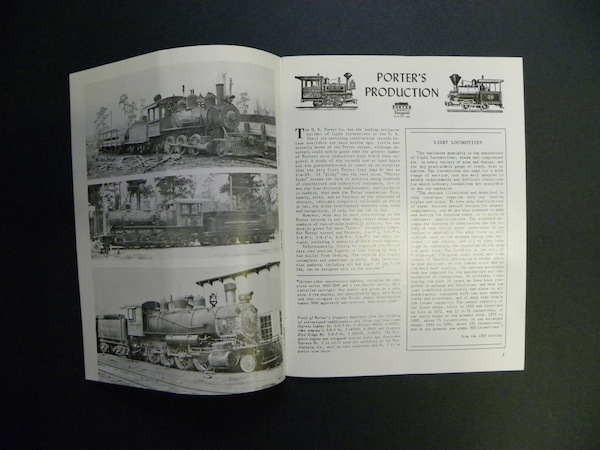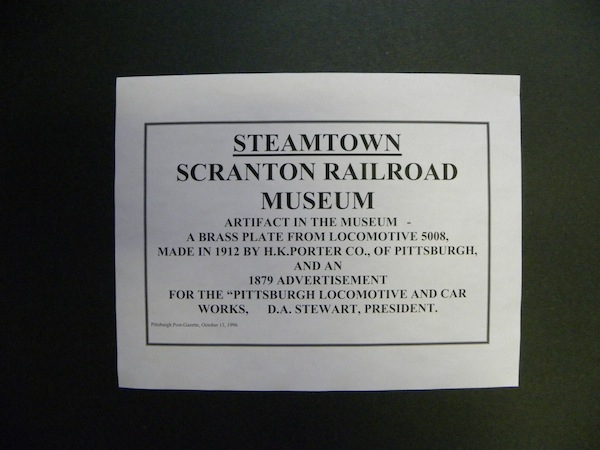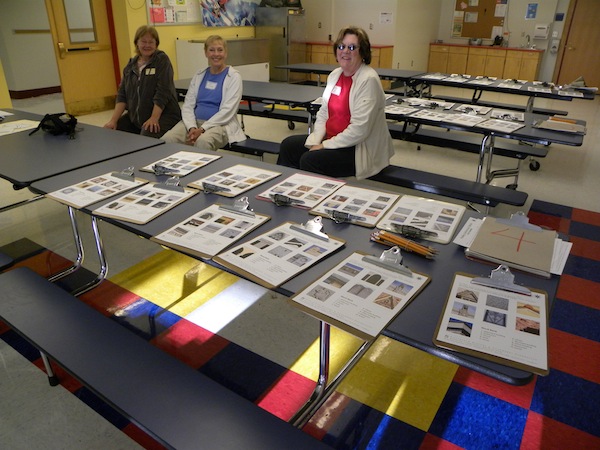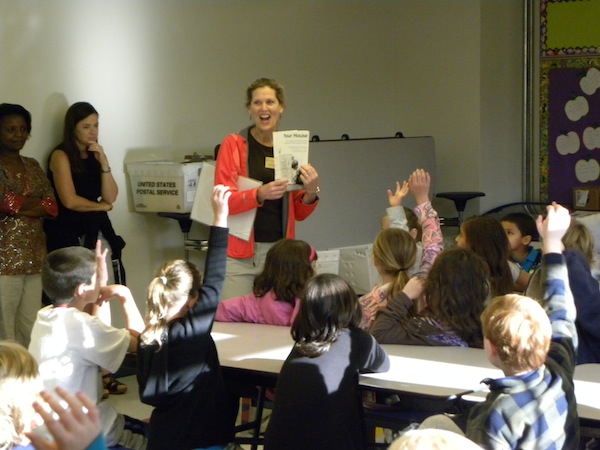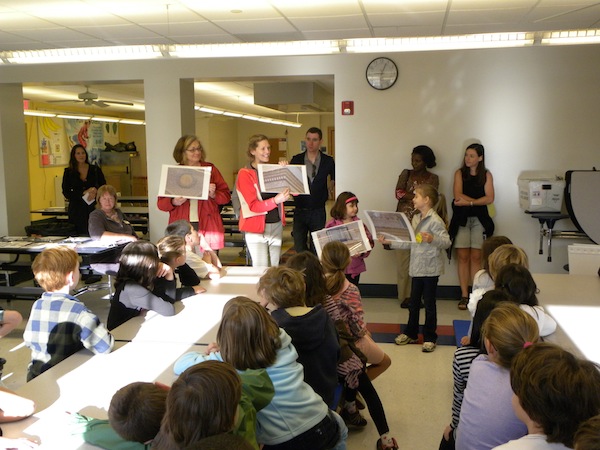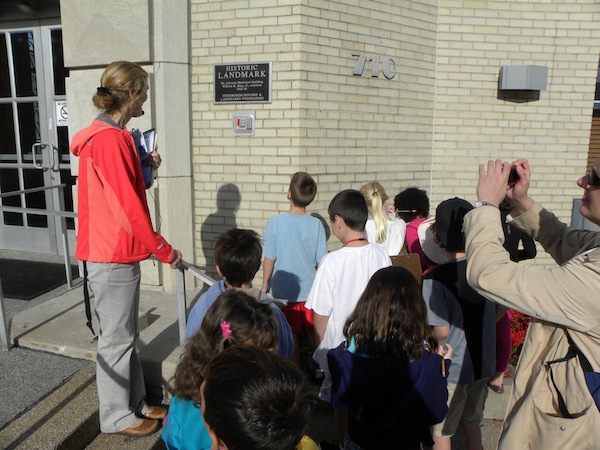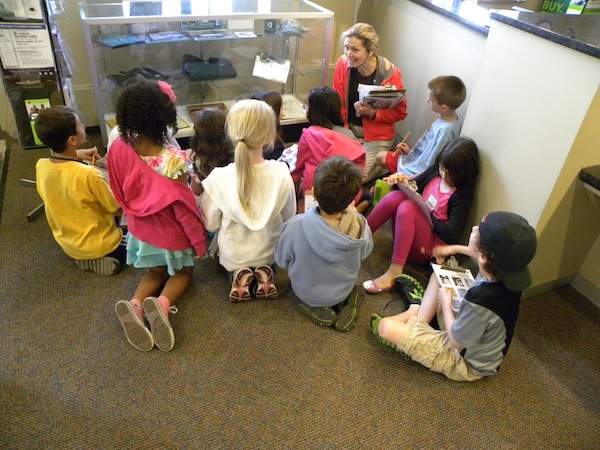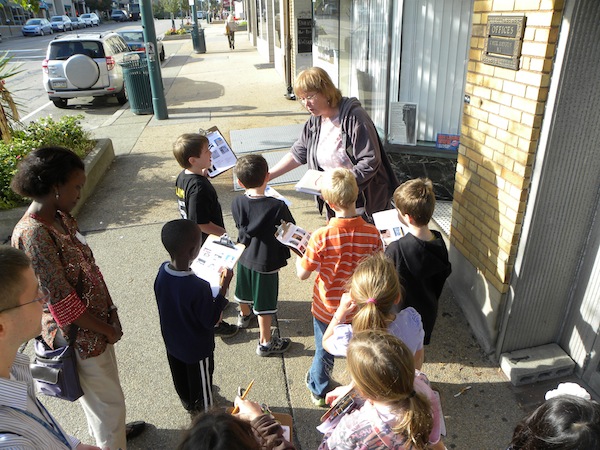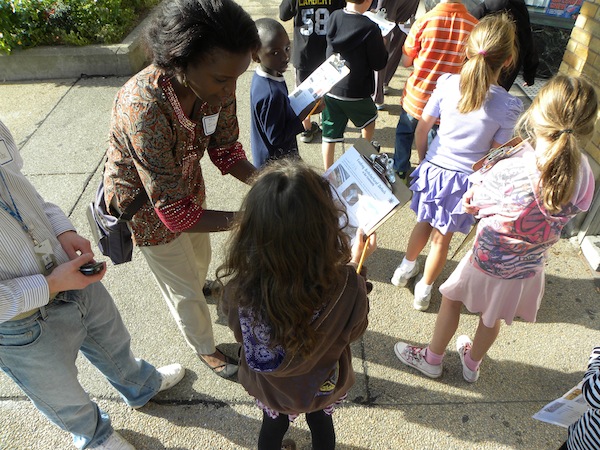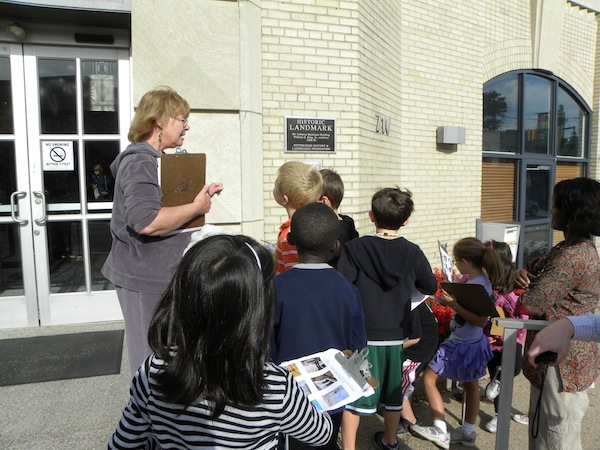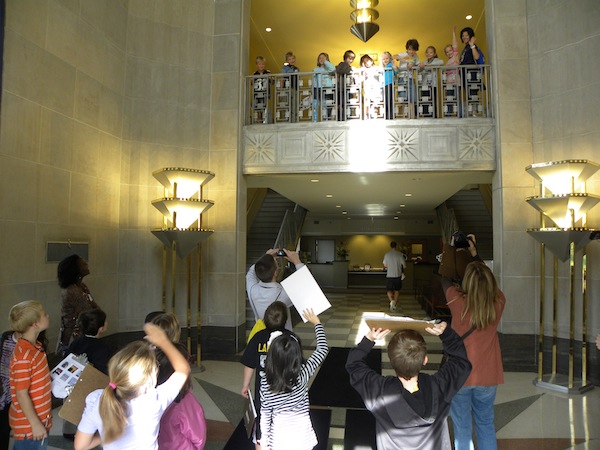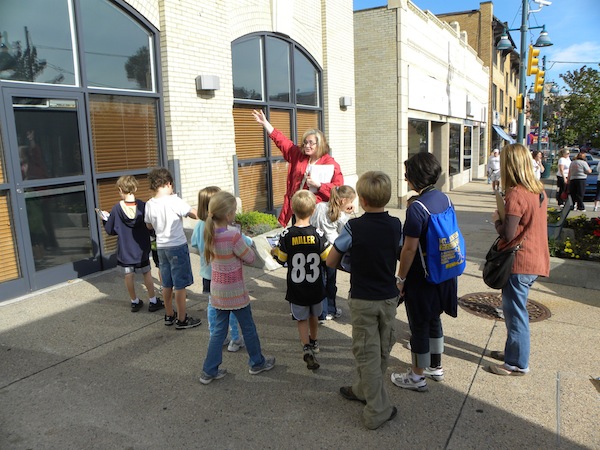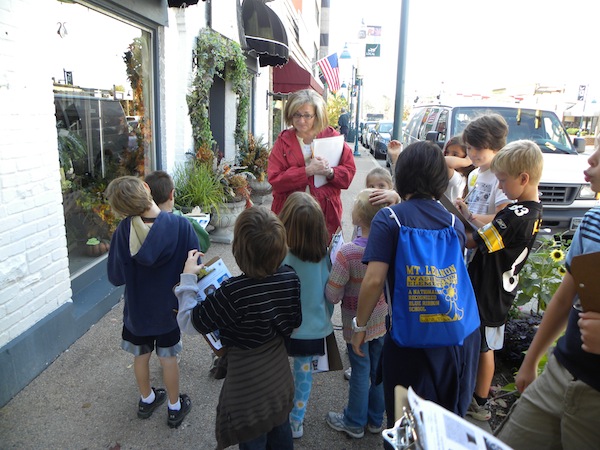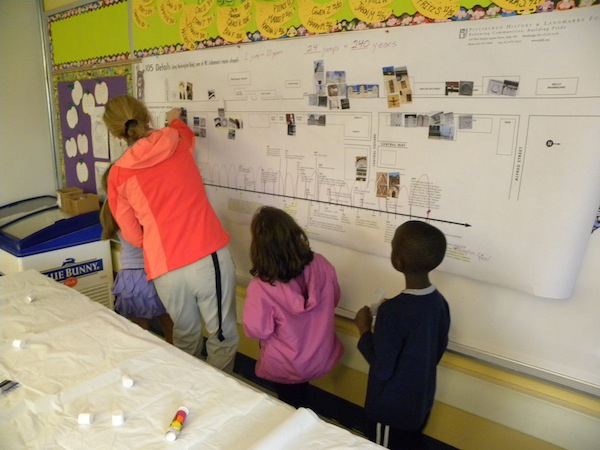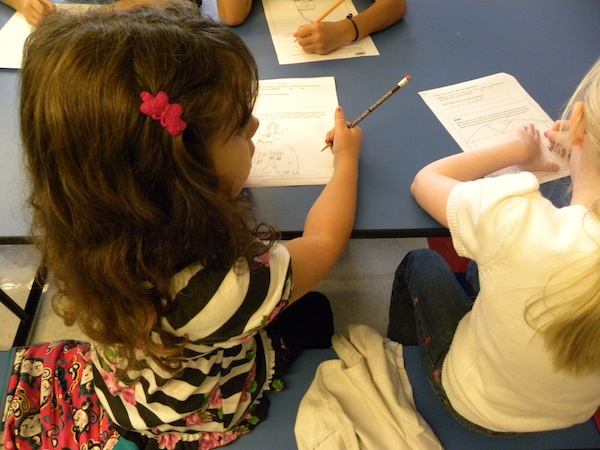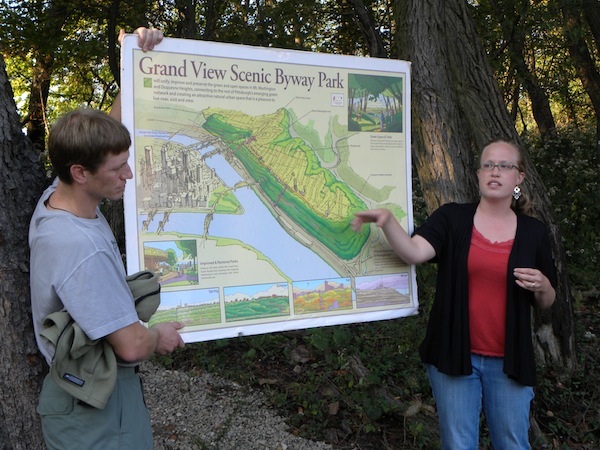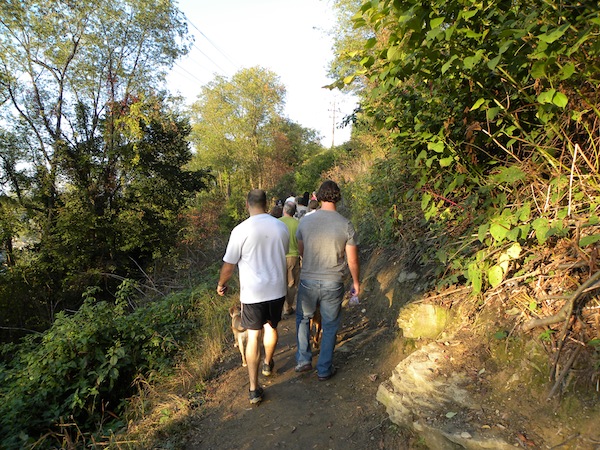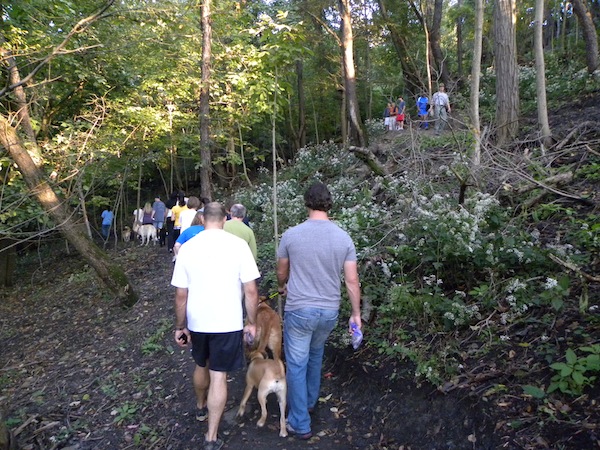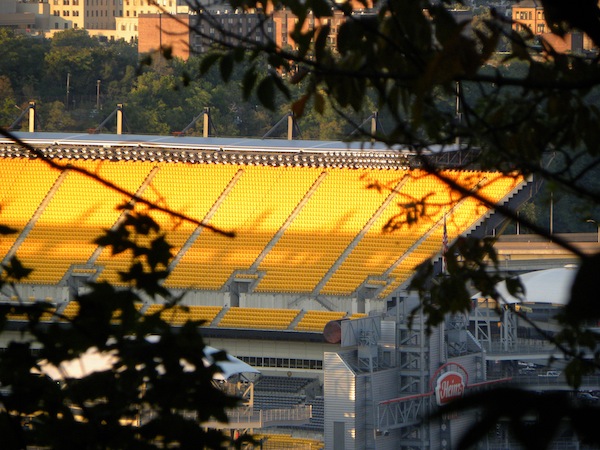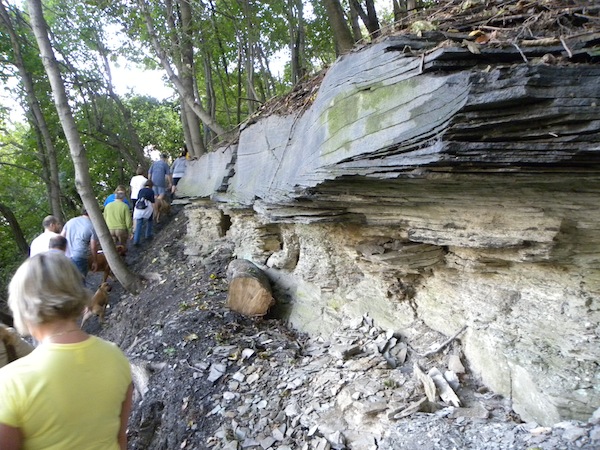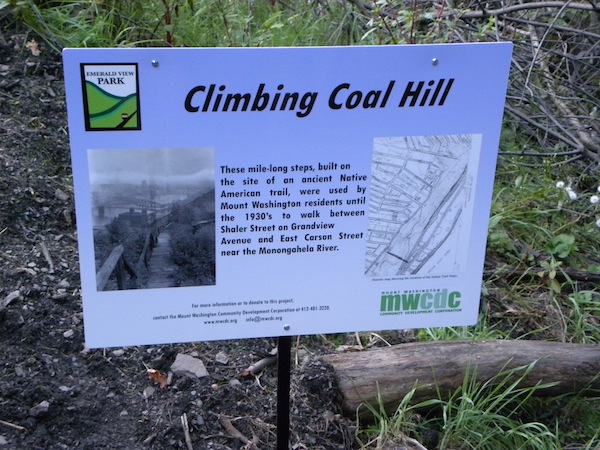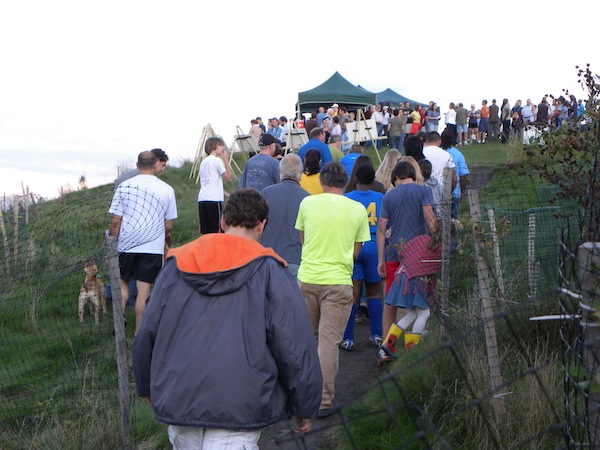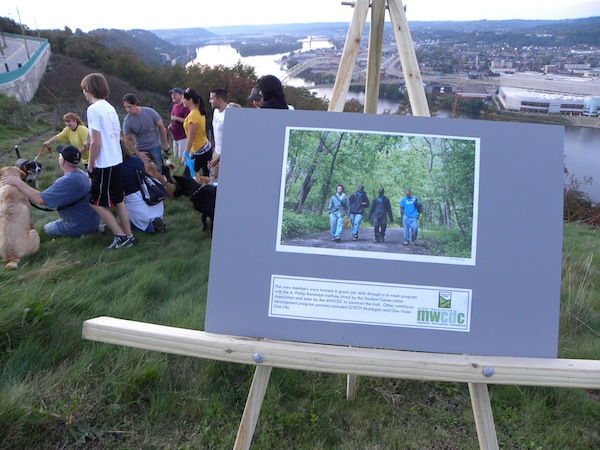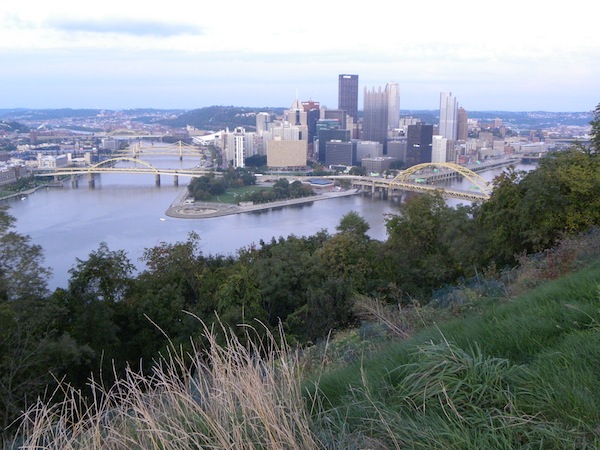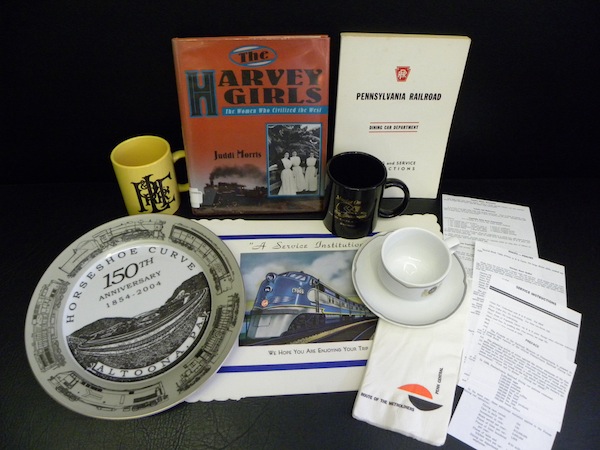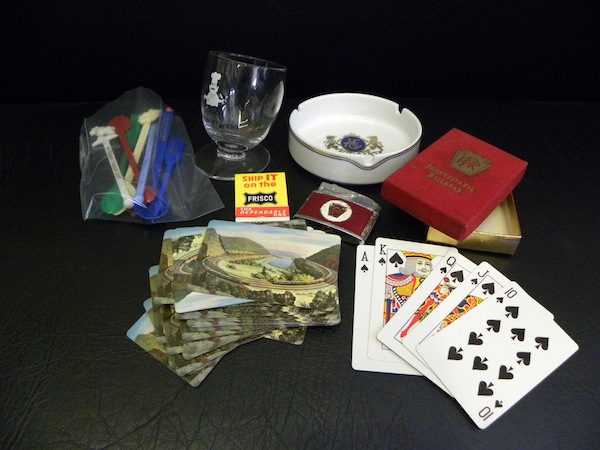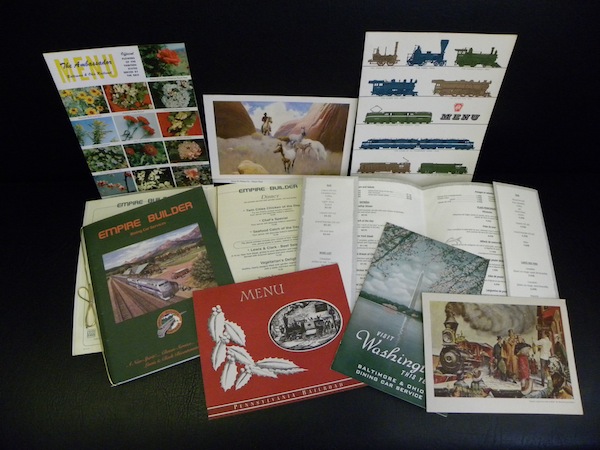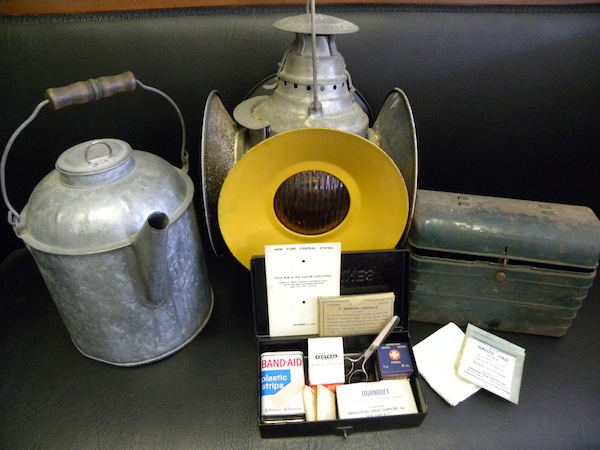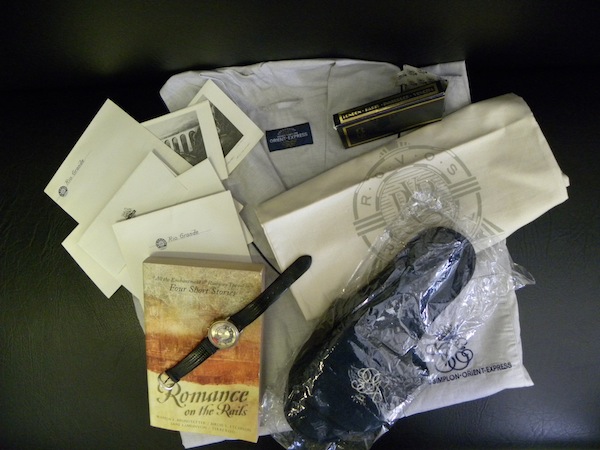
Category Archive: PHLF News
-
Thank You Fall Interns
 Eight college and graduate students assisted PHLF with its educational and historic preservation activities in the fall of 2011, incorporating their interests in urban planning, history, religious studies, interior design, photography, and cartography. They helped create a database for PHLF’s National Register Downtown Districts project; created GIS maps identifying the locations of our Historic Landmark Plaques; assisted with educational programs for the Urban League of Greater Pittsburgh Charter School and Brookline community, and attended walking tours and Historic Review Commission meetings, among other activities.
Eight college and graduate students assisted PHLF with its educational and historic preservation activities in the fall of 2011, incorporating their interests in urban planning, history, religious studies, interior design, photography, and cartography. They helped create a database for PHLF’s National Register Downtown Districts project; created GIS maps identifying the locations of our Historic Landmark Plaques; assisted with educational programs for the Urban League of Greater Pittsburgh Charter School and Brookline community, and attended walking tours and Historic Review Commission meetings, among other activities.We thank:
- Katherine Barbera, University of Pittsburgh
- Jennifer Laskowski, Art Institute of Pittsburgh
- Brandon Pinsker, University of Pittsburgh
- Daniel Rowley, University of Pittsburgh
- Steve Salas, Point Park University
- Malina Suity, University of West Florida
- Katrina Van Meer, Indiana University of Pennsylvania
- Abby Wolensky, University of Pittsburgh
As a result of their experiences with PHLF, volunteer interns add to their portfolios, gain an appreciation for Pittsburgh’s history and architecture, and develop an awareness of the economic, social, and cultural benefits of historic preservation.
Comments from our fall interns include the following:
- “My experience with PHLF inspired me to study public history and historic preservation at the graduate level. PHLF works to preserve the past, but they also strive to create continuity with the future. Their education programs help children form personal connections with the city’s cultural and architectural history. By knowing more about the buildings they see every day, these kids learn how important history is. It’s not just the city’s history anymore; it becomes their history.” ––Katherine Barbera
- “I have learned to better appreciate the city of Pittsburgh. I liked the opportunities to go and explore the city and help teach others about Pittsburgh.” ––Brandon Pinsker
- “PHLF gave me the opportunity to use my education in cartography to create a Historic Landmark Plaque database and maps for several educational programs. The walking tours and educational programs I participated in expanded my knowledge about Pittsburgh and the importance of historic preservation.” ––Katrina Van Meer
- “What I enjoyed most about interning at PHLF was learning more about the city around me. Going on tours and working on projects allowed me to feel more comfortable in the city and with my choice of major.” ––Abby Wolensky
-
Feedback from Participants in PHLF’s Education Programs in 2011
It’s official: in 2011, PHLF’s education staff and docents involved more than 12,600 people in walking and bus tours, school programs, teacher workshops, presentations, and design challenges, among many other activities.
Participant comments included the following:
- “You have an excellent program [Downtown Dragons]. I’ve had seven years of field trips with my kids and this definitely ranked at the top. The price was great––and the bonus T-shirts for the kids were super.”
- “Best field trip ever [Downtown Dragons]! I have four kids so I’ve been on a lot of field trips.”
- The Downtown tour strengths included “seeing the buildings in real life, finding the matches to the photo details, and learning about the preservation of Pittsburgh landmarks.”
- “All the docents were terrific. They related well to the different age groups and made the tour an adventure. The experience helped make our history come alive.”
- “The students were excited about seeing the beauty of the buildings.”
- “I was impressed with the beauty of the old buildings.”
- “A wonderful walking tour. . . . I have lived in Pittsburgh my whole life, but I clearly didn’t know how much I was missing! . . . amazed about all of the architectural history.”
- “Thanks for providing these [free walking] tours. It is great to really ‘see’ so much of Pittsburgh that we just walk by and don’t see, because we never look up.”
- “The three [private group] tours and our leaders [PHLF docents] were memorable. . . . We even got a visit to the Urban Room at the William Penn. . . . We thank you and the Foundation for the fine arrangements and really superlative volunteer guides. Our friends, many of whom do not know Pittsburgh, were impressed.”
- “I am a Canadian visitor to Pittsburgh. . . . Thank you for arranging this [walking] tour for me. It was everything I had hoped for. I truly believe Pittsburgh is one of the best of American cities.”
- “The bus trip with Frick and PHLF was terrific! I always enjoy seeing two great Pittsburgh organizations work together to give their members more Pittsburgh history via lectures and bus trips.”
-
Fairbanks Feature: H. K. Porter & Co.––Truly “A New Train of Thought”
James D. Van Trump Library | Frank B. Fairbanks Transportation Archive | Fairbanks Features
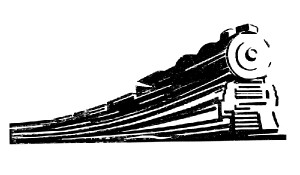 Showcasing a variety of materials located in the Frank B. Fairbanks Rail Transportation Archive
Showcasing a variety of materials located in the Frank B. Fairbanks Rail Transportation ArchiveNo. 12 Presentation
Fairbanks Feature: H. K. Porter & Co.––Truly “A New Train of Thought”
The exclusive specialty of Pittsburgh’s H. K. Porter Co. was the manufacture of light locomotives, steam and compressed air. H. K. Porter manufactured these locomotives in every variety of size and design, and to any practicable gauge of track, be it wide or narrow.
The business was begun in 1866 by the firm of Smith & Porter. It was succeeded in 1871 by Porter, Bell & Company, in 1878 by H. K. Porter & Company, and in 1899 by the H. K. Porter Company.
The first catalog, printed in 1874, contained 59 small pages and described 17 locomotives. A Tenth Edition contained 224 pages and described 559 locomotives. Each design in these catalogs was original to the company.
The annual capacity of the first shop, which was destroyed by fire in 1871, was 15 to 25 locomotives. The early shop at the 49th Street site in Lawrenceville (from 1872-1880) produced about 75 locomotives a year. As the shops enlarged, starting in 1881, output grew to 400 locomotives a year.
The company was very proud of its work and its location here in Pittsburgh. It was a great advantage to be able to obtain supplies quickly and to be able to easily transport the locomotives. The company used natural gas for forging and case-hardening. Their duplicate system was a most valuable feature for the times. By means of original and duplicate drawings and records, standard gauges and templates, and special tools and machines were made interchangeable for each locomotive with all others of the same size and class.
The Frank B. Fairbanks Rail Transportation Archive has two very valuable catalogs from this company. The Sixth Edition Light Locomotives, printed in 1889, and the Tenth Edition (no date) Light Locomotives, both have the signature of H. K. Porter signed in gold on the cover. The books––in perfect condition––give an interested reader much to enjoy. Some of the chapters and topics covered are: prices of locomotives; standard specifications for various sizes of locomotives; hauling capacities; grades; cautions; curvatures; gauges; best designs for trolleys; logging; coal mines, etc. The illustrations are clean and clear.
After World War II, business declined. The company built its last locomotive for an industry in Brazil in 1950. After that, the parts business and all the required patterns were sold to the Davenport Locomotive Works in Iowa.
A large number of Pittsburghers were employed at the H. K. Porter works in Lawrenceville over the years. Many of us drive by the former site of the company works without giving this successful locomotive business a passing thought. The Sixth and Tenth Edition catalogs give the addresses of their offices and shops (see photo caption 1, below). Next time you walk, bike, or drive by these addresses, give a nod of remembrance to this fine old company, once so important in our area.
Special Note: If anyone had a family member who worked at the H. K. Porter Company, please e-mail their name and work position to fairbanksarchive@phlf.org so we may add that information to the Archive. Also, any physical remembrances that you might wish to donate to our collection from this company would be gratefully accepted.
The five photographs show:
- Sixth Edition Catalog (1889). Office: Corner of Smithfield and Water Streets [now Fort Pitt Boulevard], Monongahela House Building [replaced by United Way Building]. Works: On Allegheny Valley R.R., 49th to 50th Streets, Pittsburgh, Pa. Tenth Edition Catalog (no date). Office: Union Bank Building [now The Carlyle], Fourth Avenue and Wood Street, 12th Floor. Works: On Pennsylvania Railroad B & A V Div., 49th Street, Pittsburgh, Pa.
- Article, “Porter’s Production––83 Years of Steam,” plus cover photo
- STEAMTOWN. H. K. Porter artifact location
- Double-page spread in Trains Magazine (Oct. 1958)
- Copy of a Wikipedia article; cover of magazine, Railway Club of Pittsburgh (March 1948); last page in this magazine, “In Memoriam”
The July 12, 2012 edition of the Pittsburgh Tribune Review (section B) features an article about several Lawrenceville renewal projects. One of the major developments is the renovation to the H. K. Porter office building, to house 34 apartments. The H. K. Porter Company was a Pittsburgh locomotive business for many years, supplying small, powerful engines for local industry.
There is preservation warmth in bringing back to life a remembrance of our great industrial heritage. The rivers brought so much to our area, and with industry gone, housing along those same rivers can keep our city alive and thriving. The entire newspaper article is now on file along with other H. K. Porter materials in the Fairbanks Archive. You are invited to come and read the article, see our H. K. Porter materials, and enjoy the entire Archive.
The Frank B. Fairbanks Rail Transportation Archive is open by appointment on Mondays, from 10:00 a.m. to 5:00 p.m. Use of the archive is free to PHLF members (one of the benefits!); non-members are assessed a $10 use fee.
The Archive is located on the fourth floor of The Landmarks Building at Station Square, in the offices of the Pittsburgh History & Landmarks Foundation.
To schedule an appointment, email the Librarian James Halttunen: James@phlf.org
-
Creating Magic with Second-Grade Explorers
“I can’t thank you enough for the magic that you have helped to create in assisting our students learn the vital foundations of their own community,” wrote Jeffrey Zeiders, supervisor of Social Studies for the Mt. Lebanon School District. “The PHLF is simply the best,” he added.
Every year since 2001, PHLF staff and docents and volunteers from the Mount Lebanon Historical Society, have been leading second-grade students in the Mt. Lebanon School District on a walking tour of Washington Road. Students search for architectural details that match photos on their worksheets and tour the historical society, municipal building, and public safety building. They paste photos of the 105 details they find on Washington Road buildings on a huge map with a timeline that they take back to school to study further. PHLF also provides students with a workbook, Your House, with worksheets on their school, and with a book of community stories, Memory Lane. Click here to see 15 photos of the award-winning educational program.
PHLF first developed the program for the Mt. Lebanon Public Library and many of the school tours still begin and end there. The program won a state Social Studies award in 2002 and continues each year through funding from the School District, a $3.00 per student tour fee, and the Alfred M. Oppenheimer Memorial Fund of The Pittsburgh Foundation, The Fine Foundation, and the McSwigan Family Foundation that help underwrite PHLF’s educational programs for students, teachers, and adults.
-
Making Pittsburgh New by Keeping it Old
Roberta Brandes Gratz, an award-winning journalist and urban critic, lecturer and author, whose newest book is The Battle For Gotham: New York in the Shadow of Robert Moses and Jane Jacobs, profiles PHLF’s work in Downtown Pittsburgh, in the current issue of The Atlantic. Click here to see the story.
-
Emerald View Park Trail Opens on Mt Washington
-
Fairbanks Feature: Something to Remember You By
James D. Van Trump Library | Frank B. Fairbanks Transportation Archive | Fairbanks Features
 Showcasing a variety of materials located in the Frank B. Fairbanks Rail Transportation Archive
Showcasing a variety of materials located in the Frank B. Fairbanks Rail Transportation ArchiveNo. 11 Presentation
Fairbanks Feature: Something to Remember You By
Americans love remembrance items that are free or inexpensive. Having these tokens is a good way to recall a trip, long after returning home to the routine of life. In the past, the gifts from the railroads to first-class passengers were generous.
The Frank B. Fairbanks Rail Transportation Archive has some wonderful memorabilia from rail lines across the country, and even a few items from European lines. These artifacts recall a time when train travel was more than a destination: it was an event! The Archive also has some everyday common worker materials that are no longer used.
The following artifacts are just a few from our collection. All artifacts in the collection are available to view when visiting the Archive.
- When you come to the end of the day you might: Write a note on Denver-Rio Grande or Erie stationery; put on slippers and pajamas from the Orient Express; place your dirty clothes in the Rovos Rail laundry bag; and polish your shoes with a soft cloth from the Orient Express packet. Before turning out the light, read a chapter from Romance on the Rails and set your watch for the new time zone the next day, knowing the train whistle alarm on the watch will awaken you.
- Workin’ on the railroad you might: Use the four-color signal light for train messages; place oil on a squeaky wheel; enjoy your lunch from a lunch pail, well used; and take care of any mishap with the New York Central’s first-aid kit.
- What shall we have to eat? Railroad dining car personnel were proud of their food preparation and also provided beautiful menu presentations that the diner could keep as souvenirs. The Archive has close to a hundred menus from rail lines around the country. Here are a few samples: Empire Builder, of the AMTRAK line; Santa Fe Railway; Baltimore & Ohio Railroad; Pennsylvania Railroad; and VIA Rail Canada.
- The Club car was mostly a men’s domain, but not by any rule. It was really a room for those who desired a social place, as the train made its way. Playing cards, smoking, or having a drink (straight or mixed) was part of the Club car scene.
- The early trains had no dining cars. The Santa Fe Railroad provided a chain of restaurants run by Fred Harvey that served passengers at various stops along the way. The meals were good, but the Harvey Girls who served in the restaurants were the claim to fame! You might enjoy a dinner in the dining car using a Missouri Pacific placemat, a Penn Central napkin, a Horseshoe Curve Anniversary plate, and an American Orient Express cup and saucer. Mugs are a newer addition, but remind us of the P&LE and the Oil Creek & Titusville RR. To understand and appreciate the high standards of the Pennsylvania Railroad dining experience, this Pennsylvania Railroad cooking and service instruction book is a must read.
The Frank B. Fairbanks Rail Transportation Archive is open by appointment on Mondays, from 10:00 a.m. to 5:00 p.m. Use of the archive is free to PHLF members (one of the benefits!); non-members are assessed a $10 use fee.
The Archive is located on the fourth floor of The Landmarks Building at Station Square, in the offices of the Pittsburgh History & Landmarks Foundation.
To schedule an appointment, email the Librarian James Halttunen: James@phlf.org
-
Main Street Work in Dormont and Carnegie
After three productive meetings with community stakeholders in Dormont and Carnegie this spring, the Pittsburgh History & Landmarks Foundation is compiling planning documents for the two boroughs, which are the latest entrants into Allegheny County’s downtown revitalization program.
Allegheny Together, a comprehensive downtown revitalization program aimed at improving the physical attributes and businesses of its participating communities started in 2007. Since then, PHLF has served as a co-administrator of the initiative.
The program is funded by Allegheny County and its participating communities include Bellevue, Bridgeville, Coraopolis, Elizabeth, Stowe, Swissvale, Tarentum, Verona, and the two newest participants Dormont and Carnegie.
First, PHLF is putting together a strategic plan to evaluate how the commercial district currently functions, make recommendations for improvements, identify opportunities for new types of businesses based on market research, and overall trends in a variety of census data categories.
We have also been reviewing the current zoning and building codes for Dormont and Carnegie, and making specific recommendations for ways to encourage historic preservation, guide new construction, and allow for good signage. These recommendations are designed to aid the local planning commissions and councils in updating the current signage and zoning ordinances.
We examined the parking and traffic issues in Dormont and Carnegie, and have compiled a report detailing parking availability in and around the commercial district, traffic flow at key intersections, and made recommendations to alleviate any issues.
Finally, design guidelines are being finalized that will aid business and property owners in the commercial district in making appropriate physical improvements to the facades of their properties. The design guidelines are meant to be a guide, to inspire individuals to make improvements, and to be a resource for anyone that wants to understand how to make good improvements to commercial properties.
We look forward to sharing our work with the communities in the near future.


